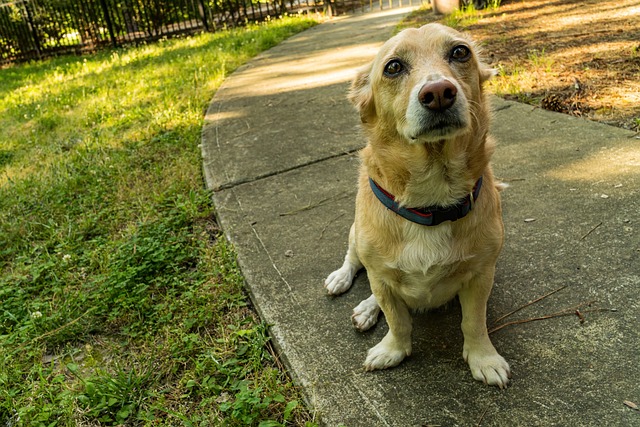
As loving and attentive pet owners, it is essential to recognize that dogs can experience emotions similar to humans, including depression. dog depression is a real concern that can significantly impact a dog’s overall well-being. In this comprehensive blog post, we will explore the definition of dog depression, the reasons why it should be taken seriously, the signs of depression in dogs, and provide the necessary steps to help resolve this issue and support your furry friend.
Table Of Content
What is dog depression?
Dog depression, often referred to as canine depression, is a condition characterized by a persistent state of sadness, lethargy, and a lack of interest in previously enjoyed activities. Dogs experiencing depression may exhibit changes in behavior, reduced appetite, decreased energy levels, and withdrawal from social interaction. While dogs cannot verbally express their feelings, their body language and overall demeanor can provide valuable insights into their emotional well-being. But why is dog depression a condition that should not be taken likely? Let us see four reasons.
Why Should Dog Depression Be Taken Seriously?
It Concerns The Emotional Well-being of Your Dog
Dogs are sentient beings capable of experiencing a wide range of emotions. Just like humans, they can suffer from depression, which can lead to a significant decline in their overall quality of life. Ignoring the signs of depression can have long-lasting effects on your dog’s well-being and may lead to further behavioral and health issues.
It Could Have an Impact on Your Dogs Physical Health
Canine depression can take a toll on a dog’s physical health. It can weaken the immune system, making them more susceptible to illnesses and infections. Depressed dogs may also experience a loss of appetite, leading to weight loss, nutritional deficiencies, and a compromised immune system
It Disrupts The Bonding and Socialization Of You and Your Dog
Depression in dogs can disrupt the bond between you and your furry companion. It may hinder their ability to connect and engage with you and other family members. Dogs that are withdrawn and disinterested may have difficulty socializing with other animals, leading to a sense of isolation and further exacerbating their depressive state. In some cases, these dogs could become even very aggressive and attack other dogs and even humans.
It Increases the Risk of Self-Destructive Behaviors
Severe cases of canine depression can escalate into self-destructive behaviors, such as excessive chewing, scratching, or even self-harm. These behaviors are often an outlet for their emotional distress and can cause physical harm or damage to your dog’s well-being. So if you notice that your dog has become more destructive than usual, it could be a sign of dog depression. Let’s now consider some signs of depression in dogs.
Three Signs of Dog Depression You Should Look Out For

1. Changes in Behavior
It is important to Pay attention to any significant changes in your dog’s behavior. These may include decreased appetite, excessive sleeping, withdrawal from social interaction, aggression, irritability, or a loss of interest in previously enjoyed activities. A drastic change in dog behavior is a 99% chance that something is wrong.
Aside from it being a good indication that your dog may be depressed, it could also mean that your dog has other serious and even life-threatening illnesses. So it is very important to start an investigation right away when you notice a sudden change in your dog’s behavior.
2. Lack of Energy
Depressed dogs may exhibit low energy levels, a lack of enthusiasm, and a general disinterest in engaging with their environment. If your dog is an active one, and all of a sudden is just satisfied with laying about doing nothing all day, this could be an indication that your dog is suffering from depression. And if your dog breed is naturally low-spirited, if his inactivity is noticeable to you, it likely means that he is no longer active and may be depressed.
3. Anxiety and Restlessness
Some dogs may display restlessness, pacing, excessive panting, or increased vocalization as a manifestation of their underlying depression. If your dog barks and wines all day long with no break, or even longer than usual, you must give added attention to your dog and make sure everything is alright. Now that we have considered some signs of dog depression, let’s now consider three things that could cause it.
Three Causes of Dog Depression
1. Loss or Separation
Dogs are social animals that form deep attachments to their human and animal companions. When they experience the loss of a loved one or face prolonged periods of separation, it can cause feelings of sadness, loneliness, and grief. Dogs may exhibit signs of depression such as decreased appetite, withdrawal from social interaction, and lethargy. It is important to provide support, love, and a stable environment during these times to help them cope with their loss or separation anxiety.
2. Major Life Changes
Dogs thrive on routine and familiarity, so any significant disruptions to their routine or environment can be stressful and contribute to depression. Moving to a new home, introducing a new family member, or changes in the household dynamics can unsettle a dog’s sense of security. They may exhibit signs of depression as they adjust to these changes. It is essential to provide reassurance, establish new routines, and offer plenty of positive reinforcement during transitional periods to help alleviate their depressive symptoms.
3. Traumatic Experiences
Dogs that have experienced abuse, neglect, abandonment, or accidents may develop depression as a result of their traumatic past. These experiences can cause deep emotional wounds and erode their trust in humans or their environment. Dogs may display fear, anxiety, and withdrawal as a way to protect themselves from potential harm. Patience, understanding, and providing a safe and loving environment are crucial in helping them overcome their past traumas and regain their emotional well-being
Six Steps to Help Support Your Depressed Dog

1 Consult Your Veterinarian
If you suspect your dog is depressed, it is crucial to seek guidance from a veterinarian. They can conduct a thorough examination to rule out any underlying medical conditions that may be contributing to your dog’s depression. They can also provide appropriate treatment options or refer you to a veterinary behaviorist for further evaluation.
2. Create a Positive Environment
Ensure your dog has a safe and nurturing environment. Provide them with a comfortable bed, toys, and access to their favorite spots. Maintain a consistent routine and offer plenty of positive reinforcement to create a sense of security and stability.
3. Increase Exercise and Mental Stimulation
Engage in regular exercise sessions tailored to your dog’s needs, as physical activity releases endorphins and promotes overall well-being. Incorporate mental stimulation through puzzle toys, training exercises, and interactive games to keep their mind active and engaged.
4. Establish a Balanced Diet
Consult with your veterinarian to ensure your dog’s diet meets its specific nutritional requirements. A balanced and nutritious diet can positively impact their mental health and overall well-being. Some core ingredients should be present in good dog food. Feel free to check out the link for more information.
5. Provide Social Interaction
Encourage positive social interactions with other dogs and humans. Arrange playdates, enroll in training classes, or visit dog-friendly parks where your dog can interact and bond with others. Positive socialization can help alleviate feelings of loneliness and improve their mood. For more information on how to carry out dog socialization successfully, click the link.
6. Seek Professional Help
In severe cases of canine depression, professional intervention may be necessary. A certified dog behaviorist or a qualified dog trainer experienced in dealing with emotional issues can provide tailored guidance and support to address your dog’s specific needs.
Conclusion
Canine depression is a serious matter that requires attention and understanding from pet owners. By recognizing the signs, understanding the impact of depression on your dog’s emotional and physical well-being, and taking proactive steps to support them, you can help alleviate their depression and restore their joy and zest for life. Remember, your dog’s mental health is just as important as their physical health, and addressing canine depression should be a priority for their overall happiness and well-being



